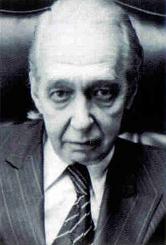
WAPA-TV is a Spanish-language independent television station in San Juan, Puerto Rico. It is owned by Hemisphere Media Group, which is 84% owned by InterMedia Partners. WAPA-TV's studios are located on Avenida Luis Vigoreaux in Guaynabo, and its transmitter is located at the WKAQ-TV transmission tower at Cerro La Santa in Cayey near the Bosque Estatal de Carite mountain reserve.

WKAQ-TV is a television station in San Juan, Puerto Rico, serving as the U.S. territory's dual Telemundo and NBC outlet. It is owned and operated by the Telemundo Station Group subsidiary of NBCUniversal. WKAQ-TV's studios are located on Franklin Roosevelt Avenue in San Juan near Hiram Bithorn Stadium, and its transmitter is located on Cerro la Santa in Cayey near the Bosque Estatal de Carite mountain reserve.

WLII-DT, branded on-air as TeleOnce, is a television station licensed to Caguas, Puerto Rico, serving the U.S. territory as an affiliate of Univision and UniMás. Owned by Liberman Media Group, the station maintains studio facilities on Calle Carazo in Guaynabo, with additional studios at The Mall of San Juan. Its transmitter is located near the Bosque Estatal de Carite mountain reserve.

The media of Puerto Rico includes local radio stations, television stations and newspapers; for the majority of all these the language is Spanish. There are also three stations of the US Armed Forces Radio and Television Service.

WORA-TV branded on-air as ABC Puerto Rico, is a television station in Mayagüez, Puerto Rico, affiliated with ABC and owned by Telecinco Media Holdings. WORA-TV's studios are located on Ponce de León Avenue in Santurce, with additional studios at the Guanajibo Building in Mayagüez. The station's transmitter is located at Monte del Estado in Maricao.

WOLE-DT is a television station licensed to Aguadilla, Puerto Rico, serving Mayagüez and the western part of the island as an affiliate of Univision and UniMás. It is a full-time satellite of San Juan–based WLII-DT, owned by Liberman Media Group. WOLE-DT's sales office is located in the Westernbank Building in downtown Mayagüez, and its transmitter is located at Monte del Estado in Maricao. Its parent station maintains studios on Calle Carazo in Guaynabo and has additional studios in Barrio Palmar in Aguadilla.
WSJU-TV, virtual and UHF digital channel 31, was a television station licensed to San Juan, Puerto Rico. The station was owned by Aerco Broadcasting Corporation. WSJU-TV's studios were located at the IBC-AERCO building at 1554 Bori Street, Urb. Antonsanti in Rio Piedras. Its transmitter was located at Cerro la Marquesa in Aguas Buenas.

WMTJ, branded on-air as Sistema TV, is a PBS member television station serving San Juan, Puerto Rico that is licensed to Fajardo. The station is owned by Ana G. Méndez University. WMTJ's studios are located in San Juan, and its transmitter is located in the El Yunque National Forest.

WJPX is a Spanish-language Independent television station licensed to San Juan, Puerto Rico. The station brands itself as América TeVé Puerto Rico.
WORO-DT, branded on-air as TeleOro Canal 13, is an educational/religious independent television station licensed to Fajardo, Puerto Rico. United States. The station is owned by Grupo RTC under Puerto Rico's Roman Catholic Church - San Juan Archdiocese, WORO-DT's studios are located on Ave. Iturregui in Carolina, and its transmitter is located in the El Yunque National Forest.
WTCV is a television station in San Juan, Puerto Rico, serving as the U.S. territory's outlet for the Spanish-language network Mega TV. Owned and operated by Spanish Broadcasting System, it is sister to radio stations WZNT, WZMT, WODA, WNOD, W276AI, WRXD, WNVI, W233CW, W238CR, WIOB, WMEG and WEGM. WTCV shares studios with independent station WJPX at the Amelia Industrial Park in Guaynabo; the two stations share transmitter facilities at Barrio Cubuy in Canovanas.
WMEI, branded on-air as WMEI 14 and TeleMar, was a television station licensed to Arecibo, Puerto Rico. The station was owned by Corporate Media Consultants Group, of which 51% is owned by Power Television International and 49% is owned by Max Media. WMEI's studios were located in Puerta del Condado in San Juan, with an additional studio in Yauco. The station's transmitter was located at Cerro Maravilla in Ponce. WMEI signed off the air on August 31, 2017 at midnight.

WRFB, branded on-air as ABC Puerto Rico, is a television station licensed to Carolina, serving the San Juan area as an affiliate of ABC. It is a full-time satellite of Mayagüez-licensed WORA-TV which is owned by Telecinco, Inc. WRFB's transmitter is located on Cerro Marquesa in Aguas Buenas; its parent station maintains studios on Ponce de León Avenue in Santurce, with additional studios at the Guanajibo Building in Mayagüez.
WWXY-LD is a independent television station licensed to San Juan, Puerto Rico. The station is owned by Héctor Marcano Martinez. WWXY-LD's studios are located at the Metro Tower in Ave. Ponce de Leon in Santurce and its transmitter at Cerro la Marquesa in Aguas Buenas.

WUNO is a radio station broadcasting a News Talk Information format. Licensed to San Juan, Puerto Rico, it serves the Puerto Rico area. The station is currently owned by Arso Radio Corporation and features programming from CNN Radio. The station's programming is also heard on translator station W232DH 94.3 FM, serving the entire metropolitan area.

Rafael Pérez Perry was a businessman and a pioneer in Puerto Rico's radio and television broadcasting industry. He owned one of the most successful radio stations on the island and in 1954 founded Puerto Rico's television Channel 11, which now is known as Tele Once and owned and operated by Univision, the largest Hispanic television network in the United States.
Tu Mañana was a Puerto Rican breakfast television show that aired on the Univision Puerto Rico television network. The show debuted on March 11, 1991 and was aired on weekday mornings. On October 14, 2014, the show was cancelled as part of a restructuring of Univision Puerto Rico's operations that included the closure of its news department. With the sale of WLII-DT from Univision to Liberman Media Group the new owners have announced they intend to revive Tu Mañana in 2023.
WUSP-LD, virtual channel 20, is a low-powered CTNi-affiliated television station licensed to Ponce, Puerto Rico. The station is owned by Senda Educational Broadcasting, a subsidiary of the Christian Television Network. WUSP-LD's transmitter is located in Cerro Maravilla.
W16CW-D, virtual channel 54, UHF digital channel 16, is a low-powered television station serving southern Puerto Rico that is licensed to Villalba. The station is owned by TV Red Puerto Rico. The station's transmitter is located at Cerro Maravilla in Ponce.
During the 1950s the impending arrival of television created public expectation in Puerto Rico, even influencing other entertainment mediums in the form of a song. WKAQ-TV was the first station to introduce regular programing in 1954, followed closely by WAPA-TV. The owners of these stations, Ángel Ramos and José Ramón Quiñones, brought their experience in the newspaper and radio industries to the new medium. The competition between WKAQ and WAPA would continue for decades, with both disputing the milestones of first videotape in 1966, first color transmission and satellite transmission in 1968. During decades, the ratings were dominated by local programming produced by Tommy Muñiz and Paquito Cordero, which adopted a family friendly approach. However, the retirement of the former, combined with the introduction of cable television and the acquisition of the largest stations by foreign interest brought changes in content beginning in the 1980s, with late-night shows and double entendre gaining prominence. Digital television was introduced to the market in 2009, widely displacing analog television.










